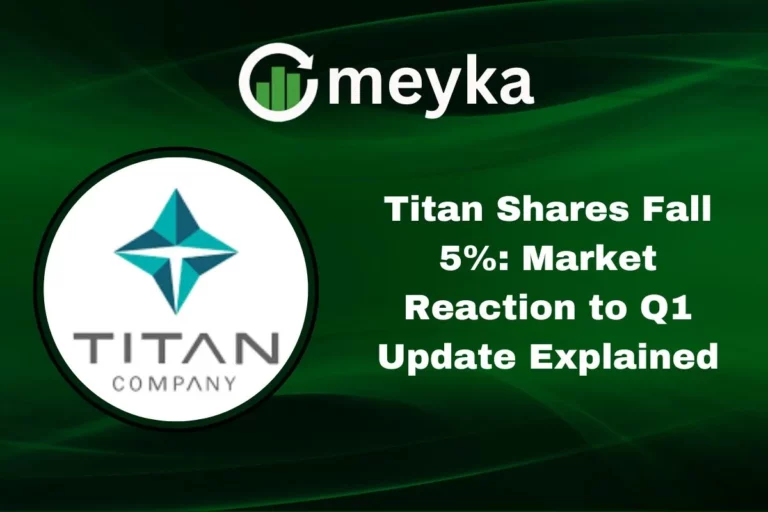DroneShield, Nov 13: Stock Plunges After CEO Oleg Vornik Offloads Shares in Major Sell-Off
On November 13, 2025, shares of DroneShield Ltd (ASX: DRO) dropped sharply after its CEO, Oleg Vornik, sold a large portion of his holdings. The move caught many investors off guard, raising questions about the timing and reason behind the sale. DroneShield, known for its advanced anti-drone and electronic warfare systems, has been one of Australia’s fastest-growing defense tech companies.
The firm gained global attention for supplying counter-drone tools to military and government agencies during rising global security tensions. Until this week, its stock had shown strong momentum, supported by major defense contracts and steady revenue growth. However, insider selling often shakes investor confidence, especially when it involves the company’s top executive.
As news spread of Vornik’s sell-off, market sentiment turned cautious, triggering heavy trading and a sudden drop in share price. The event now raises a key question: was this a simple profit-taking move or an early signal of shifting confidence within the company?
Background on DroneShield
DroneShield Ltd is an Australian defence-tech firm. It makes systems that detect and defeat small drones. Governments, airports, and security teams use its products. The company grew fast in 2025. Revenue surged and new contracts arrived. By November, DroneShield had attracted heavy investor interest.

The firm reported record quarterly sales earlier in 2025 and moved into the ASX 200. That strong run set high expectations for future growth. These gains made the stock a retail favorite. Large insider sales, therefore, had a big impact on market sentiment.
Details of the CEO’s Share Sell-Off
On November 13, 2025, CEO Oleg Vornik disclosed a major disposal of shares. Public filings show Vornik sold about 14.8 million ordinary shares. The company said the total value of his sale was roughly A$49.4 million. Two other directors also sold. Chairman Peter James sold about 3.68 million shares, and director Jethro Marks sold roughly 1.46 million.

Combined insider sales reached nearly A$67 million across the three executives. The sell-off occurred in late trading announcements the night before and then hit the market the next day. The disclosures did not include a lengthy personal explanation for the timing.
Market Reaction and Stock Performance
The market reacted fast on November 13. Shares plunged in early trade. Prices fell roughly 25-34% on the day, depending on the report. Trading volumes spiked as many holders rushed to sell. The stock hit multi-week lows within minutes.

Some outlets reported intraday falls near 30%. The sell-off dragged DroneShield below recent moving averages. That technical break added to the panic. Crossing those levels triggered stop-loss orders. The broader ASX also weakened that session, but DroneShield’s drop was far steeper than the market average.
Investor Sentiment and Analyst Commentary
Investor reactions ranged from alarm to cautious reason. Many retail investors expressed surprise. Insider selling by a CEO often raises red flags for small-cap stocks. Analysts urged calm in some notes. They pointed to strong revenue growth and contract wins earlier in the year. Others warned that selling at scale by senior leaders erodes trust.
Commentary from brokers noted how concentrated retail positions can amplify moves when insiders exit. A few analysts suggested the transactions could be personal liquidity events rather than negative signals on business health. Still, the scale and timing left many asking for clearer disclosure.
Financial and Strategic Context
Fundamentals had been improving before the sell-off. DroneShield reported record quarterly revenue in Q3 2025. The company expanded manufacturing plans in Sydney and pushed for global deals. Many customers came from Europe and Asia. Yet profitability remained thin relative to market valuation.

DroneShield traded at very high multiples versus peers. Rapid top-line growth supported bullish forecasts. But the valuation stretched. That mix of fast revenue growth and high multiples made the stock sensitive to negative headlines. Investors now face a trade-off. The firm’s sales momentum argues for patience. Insider exits and valuation risk argue for caution.
Broader Implications for Defence Tech Stocks
This episode matters beyond one company. Defence-tech names can rally quickly on contract news. They can also fall fast on insider moves. The sector attracts retail flows seeking niche exposure. That concentration makes the drops more violent. Other defence firms have seen similar swings when top executives sold shares.
Market makers and institutional buyers will watch for follow-up moves. If insiders keep selling across the sector, confidence could weaken more broadly. Yet geopolitical risks, such as conflicts and security incidents, still support long-term demand for counter-drone systems. Investors should weigh short-term volatility against those structural tailwinds.
What to Watch Next?
Look for official company statements after November 13, 2025. Monitor any clarifications about the nature of the sales. Check subsequent director holdings disclosures. Watch quarterly results and contract updates. Pay attention to trading volumes and whether large buyers step in. Analysts’ revisions to earnings and guidance will matter. Also watch for regulatory or institutional investor commentary. Finally, track general market sentiment for small-cap and defence names.
An AI stock research analysis tool could surface large-scale patterns in insider trades across similar firms. That may help investors decide whether this is a singular liquidity event or a warning sign.
Wrap Up
The November 13, 2025, sell-off at DroneShield triggered a big rethink among investors. The company’s growth story remains intact on the revenue side. The insider sales, however, created immediate doubt. Short-term volatility seems likely. Long-term outcomes will hinge on new contracts, cash flow progress, and clearer disclosure from the board.
For now, the market shows a preference for clarity. Investors will watch how management answers those questions in the days and weeks ahead.
Frequently Asked Questions (FAQs)
DroneShield’s stock fell on November 13, 2025, after CEO Oleg Vornik sold millions of shares. Investors reacted quickly, worrying the sale showed weak confidence.
Oleg Vornik sold around 14.8 million DroneShield shares worth nearly A$49 million on November 13, 2025. The large sale surprised investors and caused sharp trading.
Analysts say opinions differ. Some believe the sale was personal, not company-related. Others think it could bring short-term drops before long-term recovery potential returns.
Disclaimer: The content shared by Meyka AI PTY LTD is solely for research and informational purposes. Meyka is not a financial advisory service, and the information provided should not be considered investment or trading advice.






